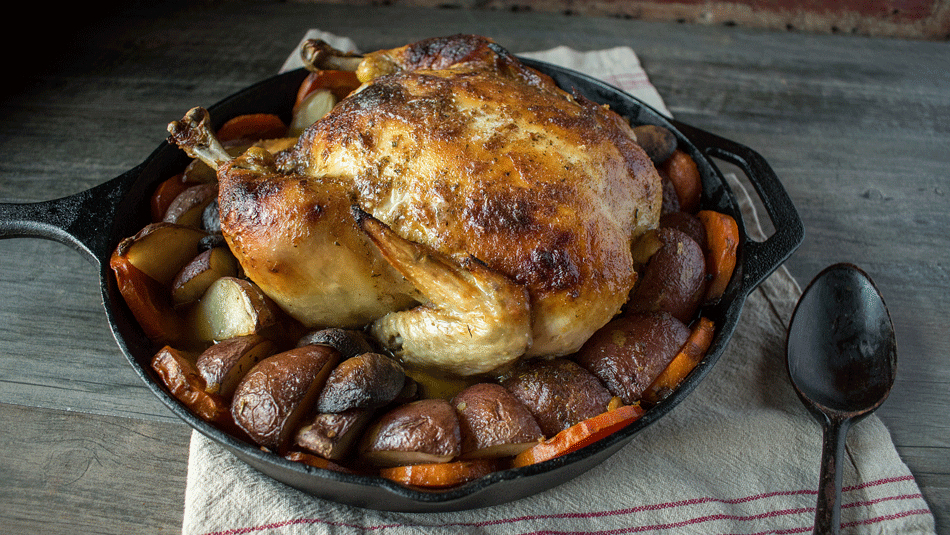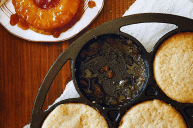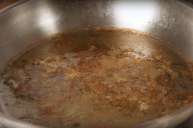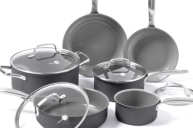I cook with cast iron regularly. In fact, it's the most-used pan in my kitchen. My 10-inch cast iron skillet from the Pioneer Woman's line has completely changed the way I think about cooking. While the thought of using more than one pot or pan was enough to turn me away from the kitchen, the functionality of cast iron has made cooking enjoyable. While it's not the easiest to clean, and let's be honest, it's not the lightest cooking material out there, cast iron is invaluable to a home cook. Whether you make the basics, like fried eggs or scrambled eggs, or you explore bread-making regularly, cast iron cookware makes all the difference.
Videos by Wide Open Country
From experience, here are my most important reasons to own a cast iron cookware.
7. It cooks everything!
Sure, stainless steel can cook most things, but there's just something about the flavor that a pre-seasoned cast iron pan provides. With excellent heat retention, it warms quickly and stays hot for as long as you need on a heat source. The cooking surface can handle both delicate meat, like fish, just as well as it handles a good sear on a steak.
6. Use it whenever, wherever.
It's not the lightest cookware material out there, but for heavy-duty, nonstick cookware, cast iron is the ideal pan for taking to the grill to the campfire to the stovetop. A good grill pan should be able to travel with you, and that is exactly what a cast iron cookware set offers.
Even enameled cast iron cookware, like a Dutch oven, moves seamlessly from multiple cooking surfaces, but it's important to check your manufacturer's guide just in case.
5. It gives a gorgeous sear.
Heat retention is key when it comes to getting the perfect char or crust on meat, steak especially. Even a cast iron Dutch oven will do the searing trick over high heat, and is perfect for popping the pot into the oven to braise short ribs or brisket in a cast iron oval pan or the like.
In addition to a great sear, it browns food beautifully, providing a golden color that is often hard to get when using other specialty cookware. Have you ever tried to get a perfectly brown crust on fried hush puppies or latkes? With a cast iron grill pan, it's a breeze.
4. It's inexpensive.
One of the reasons why my first set of real cookware was cast iron is because, all things considered, it's fairly inexpensive. We've raved about the functionality of Lodge's Enameled Cast Iron Dutch Ovens, and it's made even better by the fact that the 6-quart model will cost less than $50. Of course, if you shop fancier brands, like Le Creuset Signature Dutch Oven, you'll pay a prettier penny for your cast-iron pots.
However, we like to keep it simple and functional around here, and both Lodge and the Pioneer Woman's pots are inexpensive and of the highest quality.
3. The nonstick surface cleans easily.
Let me take you through the life of my cast iron skillet on a typical weeknight. I grab my cast iron sauté pans from the oven where I store them, and decide which to use. When dinner is ready, I simply serve the one-pan meal, protein and vegetables usually, and set my cast iron aside. To clean up, I wipe down the pan with a moist paper towel to loosen any seriously stuck bits, and if things look good, I store it back in the oven.
I wash and fully season my cast iron skillet once every three months. I don't know what the exact timeline should be, but I haven't had rust or any problems yet!
If you're looking for a great tutorial on how to restore a rusty cast iron skillet to its former glory, we have a great tutorial from Lodge Cast Iron. Salt helps!
2. It doesn't give off toxic fumes during cooking.
Did you know there's such a thing as Teflon flu? Essentially, Teflon is the brand name that we associate with PTFE, the special nonstick coating on certain pans. However, when these pans get too hot or are on the stove for too long, they can release toxic fumes that can cause flu-like symptoms in humans. Additionally, these can be fatal to birds, as well. The risk is minimal, but it's enough to turn me towards cast iron for life.
Cooking in a cast iron skillet can add a significant amount of iron to your food that is absorbed by your body. Made to cook already iron-rich foods like meats, beans, and spinach, cast iron ups your iron intake, and some even consider it to be a reliable source of dietary iron, necessary for proper health.
1. If it was good enough for your ancestors, it's good enough for you!
Cast-iron deep pots, the classic oval Dutch oven, and other cast iron cookware styles have been used for over two thousand years. These deep posts and cauldrons were used over flame, and in fact, cast iron began to improve the quality of meals. Not only were families able to cook more intricate recipes, but the uptake in iron in their diet didn't hurt, either.
Dutch ovens were specifically developed during the Industrial Revolution, where a cast iron square pan was built with a handle and legs so it could be stood up in the fireplace. This kind of pot was known as the spider.
Cast iron fell out of favor in the 1960s and 1970s, when stainless steel cookware and Teflon nonstick pans became popular. Now, however, you can find a cast iron skillet on just about every gift registry for wedding gifts and holiday gift guide for home cooks. This year, when you're shopping for bakeware sets or gift sets for your family members, don't forget about humble cast iron. It's a workhorse in the kitchen that makes every home cook's life even easier. Besides, who needs another deluxe round trivet or a set of salt and pepper mills, anyways?




